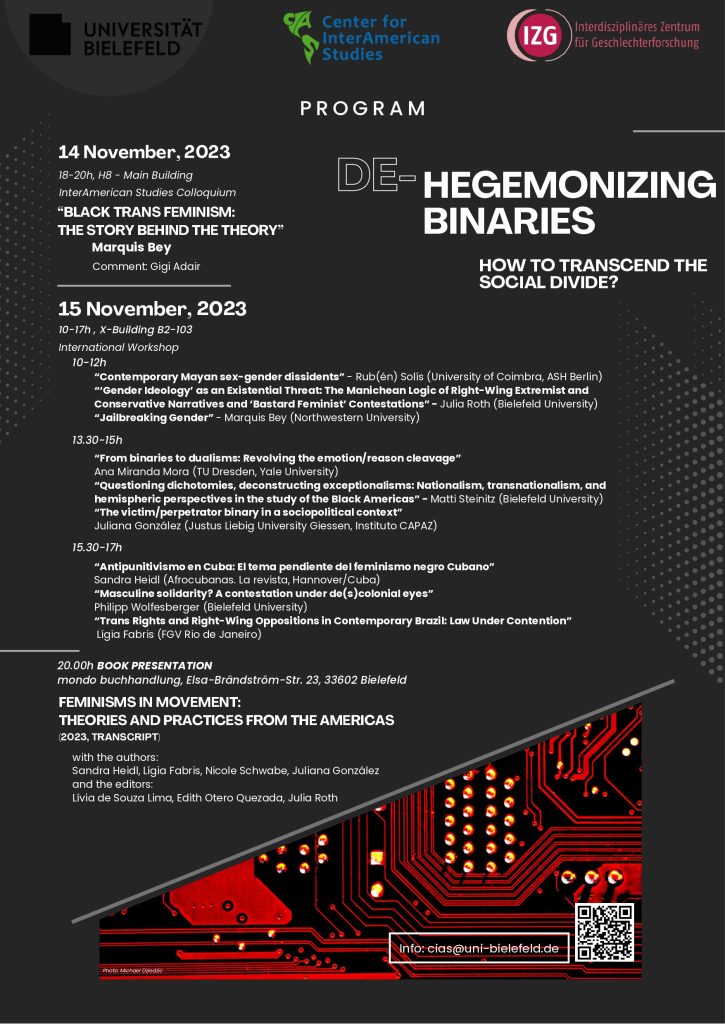Conference presented at the Bielefeld Universität, as part of the Program: De-Hegemonizing Binaries: How to transcend the social divide?, Germany, November 15, 2023
Within the Maya cosmovision and religiosity of different historical periods, the energy that moves the cosmos is associated with a complementary and equal masculine-feminine duality. On the one hand, this interpretation of the world allowed Maya women from different historical periods to exercise different functions within the social, economic, and even military organization that rebelled against the Iberian occupations in the region. And on the other hand, it gave room to the conception of androgynous beings with their respective symbolic positions within the societies. In this sense, the historian Montejo (2012: 119) points out the erroneous extrapolation and use of the category’s homosexual, lesbian, among others, created within the Western-modern scheme, for the study of sexual desire between persons of the same sex within societies built under other paradigms, such as the Mayan societies. Using a postcolonial and non-binary gendered approach, this research aims to build theoretical-empirical bridges, through case studies, on the becoming of people with subaltern sexualities -non-heterosexual and/or non-binary- intersectional traversed with another of the invisible zones of non-being, the indigenous worlds, in this case the Mayan peoples from the Mexican Southeast. The study reflects the creation of specific ways of struggling, and the multiple spaces of political action from the contemporary Mayan sex-gender dissidents.




